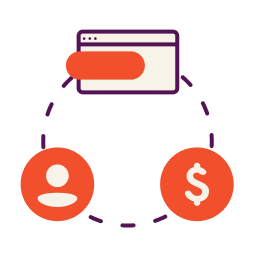Most headlines these days are telling us that the economy isn’t in the most stable position due to the pandemic, war, fuel prices, inflation, and the potential to be heading to a recession.
Experian’s State of Credit report from 2021, an analysis of all things credit, details the geographical and generational breakdown of average credit scores, how much credit consumers are using, and how they are paying it back.
The report essentially tells us that credit use remained nearly steady in 2021, despite rising prices for goods and services. Lenders are still prepared to give credit to individuals who are managing their credit limits appropriately. The credit scores’ economic health looks progressive as a result.
Credit Scores Have Improved
The average VantageScore was 714 in 2021, up four points from last year. In 2021, the average debt load climbed by $3,644 to a $96,371 total, a 3.9 percent rise. People’s and businesses’ creditworthiness has also increased as a result.
Another important discovery in the report was the fact that there were more Americans with very high scores (Super Prime) than very low scores (Deep Subprime). In 2021, the average FICO score was 716 and the VantageScore was 695. It’s important to note that credit scores are higher among people with higher incomes.
How Is Credit on Main Street?
The consumer credit picture painted above is positive, but how about small businesses? Many small business owners use consumer credit to finance their endeavors.
The Main Street Report, a report developed by Experian and Moody’s Analytics that provides insights on the financial well-being of small businesses, confirmed that loans have increased. The number of new loans for credit cards, cars, and personal unsecured loans stayed high compared to the past.
Mortgage loan originations went down, but it wasn’t because demand went down. Instead, it was because there weren’t enough houses for people to buy. Based on the rate of sales in Q1 of 2022, government data shows that there was only 1.9 months’ worth of existing homes on the market. This is a very low number compared to the past.
Also, low participation in forbearance and steady or falling loan delinquencies show that higher prices and interest rates didn’t make people change their behavior in a meaningful way. In the future, consumers are likely to spend more on services and less on goods, but their spending will stay about the same at this point in the business cycle, which is good for small businesses.
Consumers Are Spending, But Are They Paying?
Revolving credit, which primarily consists of credit card balances, increased by almost 20% from the previous month to $1.103 trillion in April, breaking the pre-pandemic record of $1.1 trillion, according to the Federal Reserve’s monthly credit report.
According to a separate analysis from the Federal Reserve Bank of New York, credit card balances are also rising year over year, hitting $841 billion in the first three months of 2022, and are anticipated to continue rising.
The surge in credit card debt, along with mortgages, auto loans, and student loans, has now brought the total amount of household debt to a record $15.84 trillion.
What’s the Risk?
The Federal Reserve Bank data from June 2022 showed that the 46 million Americans with student loan debt owed $1.75 trillion.
Over the last 10 years, the cost of higher education has increased. According to College Board, the estimated cost of college for the 2021-2022 school year looks like the following:
- In-state public four-year: $10,740, which is $170 more than in 2020-21. (1.6 percent before adjusting for inflation.)
- Out-of-state public four-year: $27,560, which is $410 more than in 2020-21. (1.5 percent before adjusting for inflation.)
- The two-year public in-district rate is $3,800, which is $50 more than in 2020-21. (1.3 percent before adjusting for inflation.)
- Private nonprofits with a four-year plan: $38,070, which is $800 more than in 2020-21. (2.1 percent before adjusting for inflation.)
Student loan debt can definitely be worthwhile if it leads to future employment and a means to pay it off. However, if students take on the debt, then either don’t graduate or can’t get a job, that debt can become a ball and chain. As a result, these lending decisions become more of credit risk due to issues with repayment. In addition, the interest rates on student loans tend to be less desirable.
The New York Federal Reserve data states that the median salary for recent college graduates stood at $52,000 in 2021, down from $52,344 the previous year.
Another issue with student debt is that many young adults taking on this debt are new to credit. They have not had much experience with managing credit, so delinquencies, followed by fees and extra finance charges, can make their debt load increase quickly, and this extra cost can be hard to handle.
What Good Credit Can Get Your Business Today
Learning how to establish business credit is essential for any small business owner, especially if your personal or length of credit history isn’t great. A company’s survival depends on its ability to obtain financing, and having good standing with credit bureaus can help you do just that. Bad or fair credit ratings can be to the detriment of your business because they don’t allow you to access the latest credit or loan options.
With good credit, your business can get the funding it needs to run on a daily basis (such as for payroll and supplies), expand and hire more employees, as well as the cash it needs to meet the costs of running the business.
Good credit will help you:
- Protect your personal finances.
- Get much-needed things for your business, such as equipment, renovations, etc.
- Receive better terms from creditors and lenders.
- Finance your inventory, payroll, staffing, marketing, and advertising.
- Obtain major credit cards from financial institutions and other lenders.
Tips for Keeping Your Credit Scores High
The credit economy is humming, but that doesn’t mean you should ignore any of the golden rules about managing your credit and keeping your credit scores high in order to gain access to more credit accounts that will increase your credit limit.
- Have a consistent payment history and pay bills on time
- Keep your credit utilization low
- Only apply for the credit that you need
Current Trends in the Credit Market for Small Businesses
Digital lending has become the biggest trend in the credit market for small businesses. Digital lending and electronic types of credit currently account for nearly $743 billion in the United States. Small banks account for $446 billion of the total, whereas major banks account for $297 billion. As a whole, this reflects all digital business financing, not just the significant number of loans granted under the Payroll Protection Program (PPP) in 2020 and 2021.
With a digital lending platform, there is no need for in-person meetings or excessive paperwork; the borrower is simply asked to supply the essential information from the convenience of their own home. This removes the need for time-consuming travel. There is software that can verify client inputs against proprietary credit and capital verification sources. This makes it possible for your bank to evaluate the borrower’s creditworthiness and swiftly come to an agreement on the price of the loan.
Small Business Credit and the Economic Outlook for 2023
It’s important for borrowers to understand the economic outlook for 2023, especially in relation to how the coronavirus has had a significant impact on small businesses. Despite the pandemic, small businesses are adapting quickly to the new business norms that are emerging. Having the flexibility to move to new operating models while maintaining the safety of both consumers and staff is essential in these difficult times. Many business owners were able to adapt quickly and find new ways to operate in order to stay afloat.
The most important thing for small business owners to prepare for in 2023 is that there is projected to be an economic recession in the first half of the year. Here are some of the trends that have been predicted for 2023:
- Increase in travel credit cards
- Higher annual fees with better card benefits
- Credit focused on crypto and blockchain technology
- Lending focused on sustainability
Nav’s Verdict
Ultimately, you need to have processes in place to be a financially sound borrower. Nav offers the appropriate financing choices for your business needs in order to grab a substantial portion of the expanding market for small business loans. This will allow you to capitalize on the industry’s overall growth.
In addition, having your business credit scores reported to TransUnion, Equifax, and other major bureaus will increase your chances of receiving the business credit cards your business needs. While this is going on, you need to make sure that you are keeping a close eye on your risk profile so that you are not putting your company’s finances in jeopardy.
This article was originally written on February 22, 2018 and updated on February 8, 2023.


Have at it! We'd love to hear from you and encourage a lively discussion among our users. Please help us keep our site clean and protect yourself. Refrain from posting overtly promotional content, and avoid disclosing personal information such as bank account or phone numbers.
Reviews Disclosure: The responses below are not provided or commissioned by the credit card, financing and service companies that appear on this site. Responses have not been reviewed, approved or otherwise endorsed by the credit card, financing and service companies and it is not their responsibility to ensure all posts and/or questions are answered.